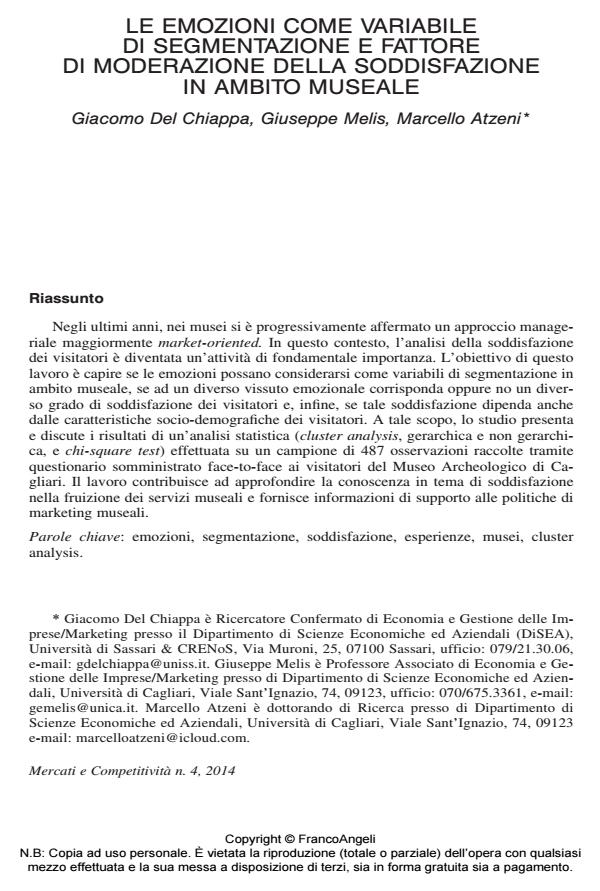Le emozioni come variabile di segmentazione e fattore di moderazione della soddisfazione in ambito museale
Journal title MERCATI & COMPETITIVITÀ
Author/s Giacomo Del Chiappa, Giuseppe Melis, Marcello Atzeni
Publishing Year 2014 Issue 2014/4
Language Italian Pages 20 P. 19-38 File size 104 KB
DOI 10.3280/MC2014-004003
DOI is like a bar code for intellectual property: to have more infomation
click here
Below, you can see the article first page
If you want to buy this article in PDF format, you can do it, following the instructions to buy download credits

FrancoAngeli is member of Publishers International Linking Association, Inc (PILA), a not-for-profit association which run the CrossRef service enabling links to and from online scholarly content.
The role of emotions in museums: implications for visitors’ segmentation and satisfaction In recent years, in museums an increasing market-oriented approach has been developed. In this context, the visitors’ satisfaction has been recognized as a key element in gaining an advantage over competitors. This study investigates whether emotions on visitors’ experience, whether emotions can be considered as a suitable variable to segment visitors at a museum. Further, it analyses whether emotions influence visitors’ satisfaction, and whether this depends on socio-demographic characteristics or not. A structured questionnaire was developed and data were collected at the National Museum of Archaeology in Cagliari in Sardinia (Italy) via 487 face-to-face interviews. Hierarchical and non-hierarchical cluster analysis and a series of chi-squared tests were run for the purpose of the study.
Keywords: Emotions, segmentation, satisfaction, experience, museums, cluster analysis.
Giacomo Del Chiappa, Giuseppe Melis, Marcello Atzeni, Le emozioni come variabile di segmentazione e fattore di moderazione della soddisfazione in ambito museale in "MERCATI & COMPETITIVITÀ" 4/2014, pp 19-38, DOI: 10.3280/MC2014-004003